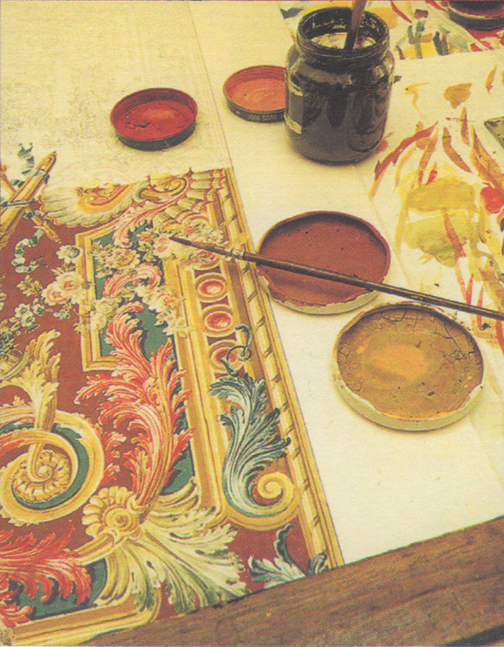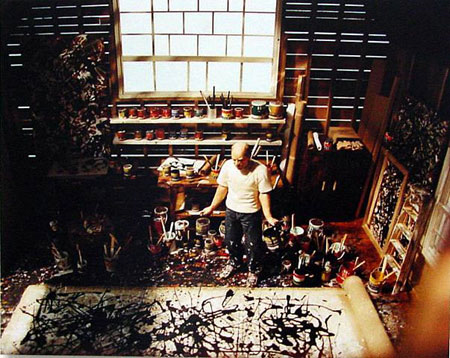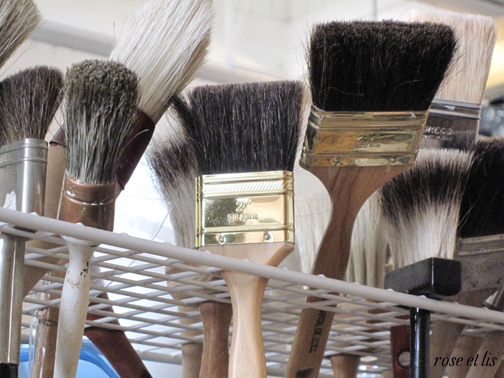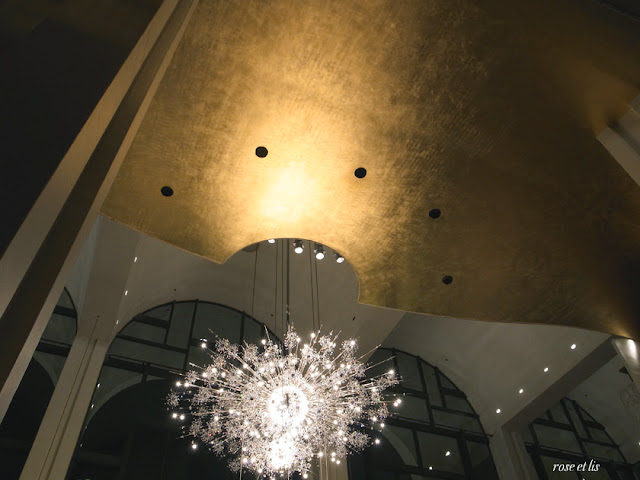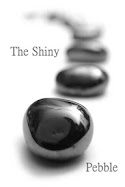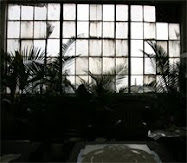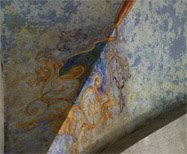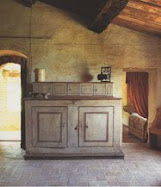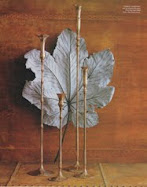When you see something for the first time and it speaks to your soul, you don't forget it. I'll never forget the first time that I saw a painting by an artist whom I had never heard of before. Was this painting a Rothko (my then current favorite)? It had such depth and character, but it wasn't quite his work. The colors were so vivid, the patina unmistakable. How was that achieved? Who was this artist? Luckily, Google came to the rescue and I discovered Marcia Myers. I soon owned the Hudson Hills Press publication named Marcia Myers Twenty Years: Paintings and Works on Paper 1982-2002 by Dr. Renee H. Shea. It is one gorgeous, oversized book that I refer to often.
Marcia Myers was best known as a fresco artist who painted abstract canvases that reflected her love of Pompeii, the frescoes of the Renaissance and contemporary abstract paintings. She loved to experiment and developed a layered technique of combining unorthodox mediums with the traditional to produce the textured frescoes.
After completing her MFA in painting at George Washington University and a Fulbright scholarship, Marcia began teaching Art History at the Madeira School in Virginia. She later credited her academic training, including classes on materials and methods, with giving her the confidence to push the limits with the mediums that she experimented with when creating her frescoes.
Marcia was deeply influenced by the ancient ruins in Pompeii and Herculaneum, making over thirty visits to study the frescoed walls. She strived to capture the incredibly rich colors and amazing textures, beginning with works on paper and later moving to large linen canvas.
Myers began painting with oils and pigments, layering thin layers of oil glazes and creating textures with paper and fabric. Works done by abstract painters, such as Mark Rothko and William Turner, were her early inspirations.
Myers continued to develop and refine her technique, using the raw, historical pigments favored by the Renaissance artists. She layered the pigments along with marble dust and clear acrylic varnish, combining many layers to achieve the luminous depths and vibrant colors that define her paintings.
Myers started to paint in series, working on two or three canvases at one time, moving back and forth between them. These abstract diptychs and triptychs showed off her rich colors: burnished red-oranges, creamy whites, mustard yellows and cool turquoises and blues.
Instead of layering the powder pigments into fresh plaster as in the frescoes of Pompeii and the Renaissance, she produced her frescoes by layering the pigments and marble dust on to clear varnishes and glazes, thus displaying a thoroughly modern take on the ancient medium. Using the powder pigments allowed her to make the most of each pigment's properties. While the ochres created a more opaque surface, the reds were more transparent. Lapis lazuli pigment stayed suspended in the medium, thus shimmering in light.
Marcia Myers' chipped and scraped surfaces continue to draw me in to contemplate and admire.
What is your favorite?
Marcia Myers died an untimely death in 2008. For those of you lucky enough to live close to the Gail Severn Gallery in Ketchum, Idaho, the Gallery is presenting Riches of Remembrance, a collection of Marcia's work. From December 20, 2010 through January 31, 2011, the paintings to be shown are mainly from her own personal collection.
+web.jpg)
